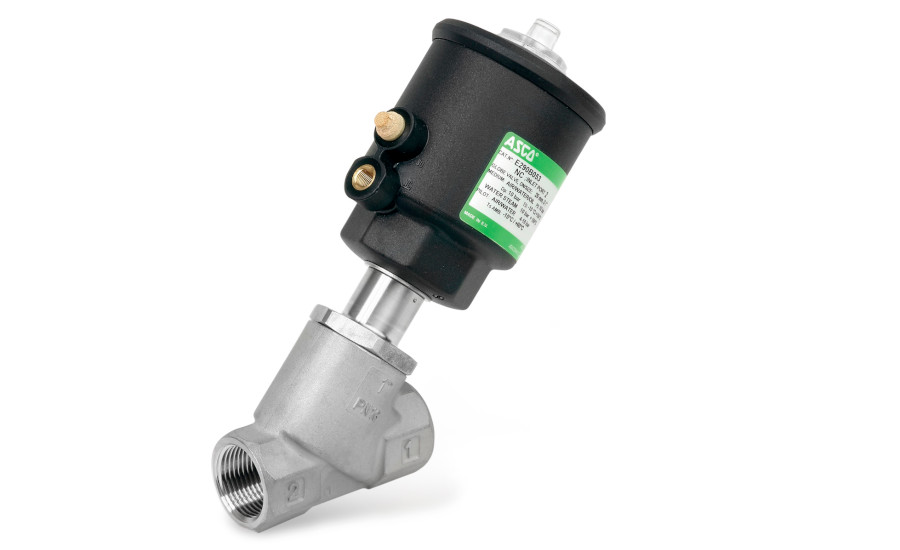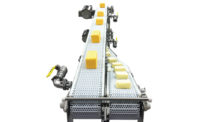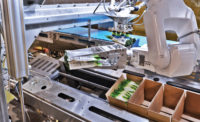A flood of financial and operational benefits awaits dairy processors that take aggressive steps to control escalating wastewater generation and energy use. Indeed, with water and energy accounting for a significant portion of production expenses, astute handling of such elements can result in extensive cost savings and plant efficiencies, analysts state.
Poor management of leaks, old infrastructure, lack of knowledge about the efficient use of water, and even a plant’s operational culture are major causes of excessive wastewater and energy expenditures, says Brett Robison, strategic business director for Kurita America. The St. Michael, Minn.-based company is a provider of water treatment equipment, technologies, chemistries, and engineering services. He notes that many operators “either are too conservative around utilization of reuse water or haven’t looked at technology options in the recent past to understand what options they may have.”
Improper and inefficient boiler and cooling system operations also generate excessive wastewater and energy, as does the failure to reuse condensate of whey (COW) in the equipment, says Tim Daniels, corporate account manager, food and beverage, for Chem-Aqua Inc., an Irving, Texas-based developer of water treatment programs. COW is the water that processors generate when there is evaporation or concentration of milk products.
The influx of new dairy products, including plant-based alternatives, is resulting in greater energy and water use as well because of production increases that lead to longer and faster processing cycles and greater sanitizing requirements, says Eileen Voges, marketing director for St. Louis-based technology and services provider Emerson Fluid & Motion Control.
“Clean in place is one of the most energy-intensive applications and typically accounts for about 30% of a plant’s total energy consumption,” she states.
Clean-in-place (CIP) procedures for cleaning interior product contact surfaces, including pipes and equipment, are those that take place without equipment disassembly.
Along with that resulting from routine cleanings and CIP, wastewater generation occurs when there is an upset in the process or extensive fouling that requires extra amounts of water and cleaning chemicals to restore performance, says Derek Hibbard, vice president of the dairy business for Solecta Inc., an Oceanside, Calif.-based provider of membrane technologies.
Dairy processors could slice wastewater and energy expenses by continuously looking for ways to optimize the overall system to avoid fouling, Hibbard says. That requires taking a holistic approach “by looking across the entire system, as small changes in one place may impact performance in another,” he says.
Mind the membranes
Excessive water use can result from many smaller occurrences such as minor leaks around connection points.
Processors also will benefit by taking a more dynamic approach when cleaning membrane separation systems, Hibbard states. Membranes are barriers that allow water to pass through while preventing the movement of unwanted substances such as salts, impurities, viruses, and other particles.
Membrane fouling occurs when solutions or particle deposits gather on membrane surfaces or pores. The foulants restrict water flow through the membrane, resulting in such issues as higher hydraulic resistance, greater energy consumption, and damage to the membrane and other system components.
“Looking for ways to optimize cleaning cycles so that they are tailored to the actual conditions — and can adjust upward or downward accordingly — can be helpful to ensure that one is only applying the amount of water, cleaning chemicals, and energy that is necessary to restore the system to peak operation and hygienic conditions,” Hibbard notes.
While the use of chemicals during sanitation can help reduce water requirements, processors with older facilities and equipment still might lack the ability to generate optimal flow or energy efficiencies, says Michael McLoughlin, technical sales engineer for Synder Filtration, a Vacaville, Calif.-based supplier of membrane technologies.
“Dairies require a lot of process water, particularly for cleaning operations,” he states. “But cleaning parameters can be somewhat loose, resulting in more water and energy used than is strictly necessary.”
Excessive water use can result from many smaller occurrences such as minor leaks around connection points, McLoughlin states.
“Little things really add up,” he notes. “Improving efficiency is everyone’s responsibility, and employees at every level need to be trained on the most updated standard operating procedures with tight parameters.”
Dairy processors could further reduce water waste by managing the mechanical, operational, and chemical aspects of their processes in tandem to address variability and optimize treatment, says Carol Hudson, senior marketing manager for Naperville, Ill.-based Nalco Water, an Ecolab company and provider of water treatment and process improvement solutions. The use of monitoring and measurement technologies also could help dairy processors gain the necessary visibility to effectively manage wastewater operations. Such technologies might analyze water quality, environmental impact, and treatment program costs, she notes.
“Because wastewater streams can vary dramatically, effective treatment requires an integrated approach between chemistry, equipment, and automation,” Hudson says, adding that operators could further reduce expenses by properly managing energy for cooling and refrigeration, as well as steam for heating and cleaning.
“Processors who produce whey and dry products, which involve the concentrating and drying of milk, use energy-intensive processes, including evaporation, powder dryers, and reverse osmosis,” she notes.
Reverse osmosis is a water treatment process that uses pressure to remove contaminants from water by forcing water molecules through a semipermeable membrane.
Processors that leverage ultraviolet systems for pasteurization in lieu of heat-based pasteurization can create efficiencies as well, says Orly Landesman, marketing manager for Atlantium Technologies Ltd., a Beit Shemesh, Israel-based provider of water treatment solutions.
“In addition to energy savings, plants gain operational flexibility since there is no need to wait until the water temperature has risen, and the footprint also is much lower,” he notes.
Face the future
In addition to benefitting from cost savings, processors that focus on wastewater and energy reduction will become more attractive to the expanding base of environmentally conscious shoppers who seek products from companies with similar goals and values.
Yet because of the relatively low cost of water, it often can be difficult for operators to justify infrastructure investments to improve water intensity or reduce overall water usage, Robison says.
“It is critical for a dairy organization to understand the impact of water and energy on their overall production, with a lens on risk management and the future,” he notes. “Fighting old culture or viewing water and energy as nothing more than a cost of doing business without understanding the global landscape is short-sided.”
Dairy processors, meanwhile, face the challenge of competing with other production priorities when seeking the water technology improvements that require planning, capital investment, and formulation of production processes, says José Molina, manager of business development for Evoqua Water Technologies’ ADI Systems, a Pittsburgh-based provider of water and wastewater treatment solutions.
In addition to benefitting from cost savings, processors that focus on wastewater and energy reduction will become more attractive to the expanding base of environmentally conscious shoppers who seek products from companies with similar goals and values, Voges says.
“Consumers are more active in learning and caring about a producer’s sustainability initiatives,” she states, which includes efforts to lower emissions and reduce waste.
Processors that reduce their reliance on outside factors for energy — for example, by utilizing biogas to lessen demand for natural gas — also could better meet corporate sustainability objectives “and benefit from being seen as a good corporate citizen,” Molina says.

Indeed, maximizing water system efficiency will decrease the use of chemical treatments, enable processors to better meet their environmental sustainability goals, and enhance the health and safety of plant workers, Daniels says.
“Reducing water use can have massive benefits,” McLoughlin agrees. “The cost savings are obvious, but the environmental and public image ramifications can’t be understated.”
Additionally, less wastewater in dairy processing means more water is available for other industrial, recreational, and residential needs, he says.
“Regulations on water use are only going to get stricter,” McLoughlin notes. “Taking steps to save water in current operations will leave dairies better prepared to face new restrictions and may help lessen future costs and headaches.”
Operators seeking to reduce wastewater should first pinpoint current levels by monitoring their biggest water-using applications, including cleaning and sanitization, Robison says.
“Understand where you are now, and have a plan to get to where you want to be,” he states. “Water reuse is feasible and appropriate for any dairy.”
Operators can benefit from water, wastewater, and energy audits in production and wastewater treatments while investigating water and energy reduction and water reuse initiatives, Molina says.
“Plants can also evaluate waste product recovery, particularly if recovered product can be sold, and anaerobic digestion of waste product where energy can be recovered from the products,” he notes. “Looking at proper wastewater treatment technologies through a sustainability lens is also a good way to reduce wastewater generation and energy use.”
Properly training workers on reduction methods and offering incentives to improve water management in each department could cut costs as well, Robison states. He adds that processors could save 5% to 10% of water “simply by being more aware of water use and plant reduction strategies.”
Reducing the conditions that result in water and energy upticks, meanwhile, will improve the overall efficiency of dairy operations and result in longer equipment use, reductions in the amount of cleaning chemicals that are necessary “and, perhaps most importantly, improving overall yield and quality,” Hibbard says.
Using a technology supplier that understands the processor’s “pain points” and has a “breadth of industry and application knowledge” also will enable operators to better reduce wastewater and energy generation, Voges notes.



